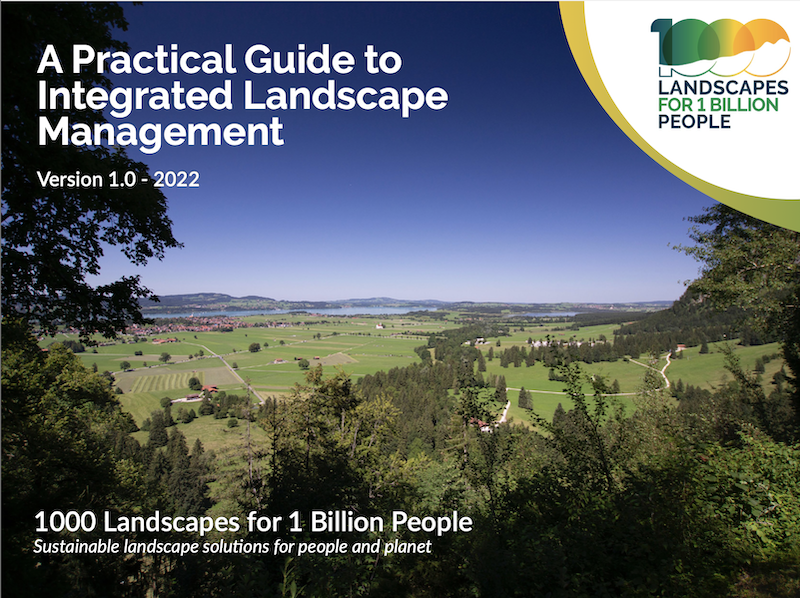Our friends at 1000 Landscapes for 1 Billion People have been producing some really useful tools for landscape practitioners. None more so than A Practical Guide to Integrated Landscape Management.

We’re fans of this practical guide – one in a series of other useful products that they are rolling out. If you’re working in ILM but suspect you might not be fully conversant with all the basic theory, consider this your cheat sheet. (Available in English and Spanish.)
Here’s how the authors themselves explain the rationale behind the useful guide they have created:
Working towards ILM requires reaching agreement on a shared landscape vision and strategy among stakeholders who have different and sometimes competing priorities, often with diverse interests, perspectives, influence, cultures and languages, and sometimes with histories of conflict.
Though each landscape is singular, LPs all encounter common challenges in carrying out collaborative action. For the majority of stakeholders in a given landscape, what we call landscape literacy is typically low. People are generally not familiar with the overall economic, population and ecological flows within the landscape, nor how resource management impacts in one part of the landscape affect other parts. Information relevant to land use decisions and practices is often difficult to access, compare and evaluate. Stakeholders operate at different scales within the landscape, with producers, buyers and government agencies working across farms,supply chains, land use types or administrative boundaries. This reality makes it hard to align their priorities.
Furthermore, while policies often aspire to sectoral integration, in many parts of the world public programs and regulatory agencies still operate in policy silos. The result is fragmented short-term government interventions. Potential synergies between different actions go unexplored. And while raising and allocating finance is a critical part of transitioning to a world with resilient landscapes, many finance institutions are not organized to handle landscape investments.
To make the process easier, more effectitive and more inclusive, the 1000L inititiatitive offers this Practical Guide to ILM. The guide provides a generic, locally adaptable, conceptual process and practitical guidance for carrying out ILM. The guide is intended for LP conveners, facilitators, leaders, members and supporters.
The 1000L coalition created this Practical Guide to ILM by incorporating the collective experience of 1000L partners. The guide refers users to a supplemental tool guide of suggested tools that can support collaborative landscape planning and action. 1000L is creating additional tools and resources to further support these processes and serve the diverse needs of LPs worldwide.
Inspiration and sources for the ILM Practical Guide
The Practical Guide to ILM was inspired and informed by global learning from field experience. Pulling from an array of literature, consultations and surveys over several years, Sayer et al. (2013) developed the 10 Principles for a Landscape Approach. Scherr, Shames and Freidman (2013) summarized ILM’s key features being used across 80 communities of practice. Brouwer et al. (2015) developed foundational work on Multi-Stakeholder Partnerships.



